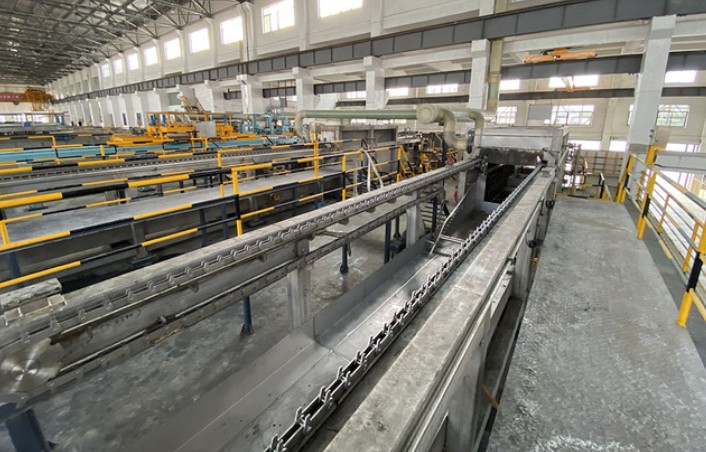NEWS&EVENTS
As an important metallurgical process, acid hydrometallurgy of antimony is to extract antimony from antimony concentrate efficiently and environmentally friendly through a series of fine chemical and physical processes. The following is a detailed introduction to the key steps of the process and the equipment used:

I. Key steps
1. Leaching process:
In an acidic medium, a chlorinating agent (such as ferric chloride or chlorine) is used to leach antimony from antimony concentrate to form an antimony-containing leachate.
2. Hydrolysis and neutralization:
By adjusting the pH value of the leachate, the antimony compound is converted into a precipitable or crystallizable form, such as sodium antimonate or antimony white.
3. Electrolytic or reduction treatment:
Electrolytic method: In a diaphragm electrolytic cell, direct current is used to reduce the antimony ions in the leachate to metallic antimony at the cathode.
Reduction treatment: Use a reducing agent (such as iron) to replace the antimony in the leachate to prepare metallic antimony.
4. Preparation of antimony white by neutralization-hydrolysis method:
Further adjust the pH value and temperature of the leachate to promote the hydrolysis and precipitation of antimony compounds to form antimony white products.
II. Equipment used
1. Leaching equipment:
Leaching tank: used to leach antimony concentrate in acidic medium.
Agitator: ensure that the material and the leaching agent are fully mixed during the leaching process.
Heater: maintain the temperature required for the leaching process.
2. Hydrolysis and neutralization equipment:
Reactor: used to adjust the pH value of the leachate and promote the hydrolysis of antimony compounds.
Neutralization tank: used to neutralize the leachate to reach the pH value required for subsequent treatment.
3. Electrolytic equipment:
Electrolytic tank: provides a place for electrolytic reaction.
Diaphragm: separates the anode area and the cathode area to prevent impurities from mixing into the cathode area.
Anode (graphite): used as the anode material for the electrolytic reaction.
Cathode (titanium plate or copper plate): used as the cathode material for the electrolytic reaction, antimony ions are reduced to metal antimony at the cathode.
4. Reduction treatment equipment:
Reduction tank: used for reduction reaction to prepare metal antimony.
Displacement reactor: provides the place required for reduction reaction.
5. Neutralization-hydrolysis method for preparing antimony white equipment:
Precipitation tank: used to precipitate antimony white products.
Dryer: used to dry antimony white products and remove excess moisture.
These key steps and equipment together constitute the core process flow of acid hydrometallurgy, which aims to extract antimony elements from antimony concentrate efficiently and environmentally friendly.